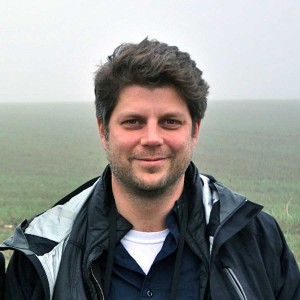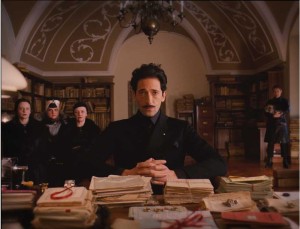
Wes Anderson‘s new film The Grand Budapest Hotel tells the story of an eccentric and charming world famous concierge, Gustave H. (Ralph Fiennes) and his adventure filled friendship with Zero Moustafa, (Tony Revolori) the new lobby boy. The film spans three time periods throughout the 20th century and is full of intriguing production design by Adam Stockhausen, who has also collaborated with the director on Darjeeling Limited and Moonrise Kingdom.
Fresh off his Academy Award nomination on Steve McQueen‘s film 12 Years A Slave, Stockhausen is also know for his work on The Switch (2010) and Scream 4 (2011). The visually stunning Grand Budapest Hotel took some of its inspiration from a collection of Photochrom postcards, colorized images printed mostly between 1890 and 1910. “They’re hand-tinted postcards and they were kind of perfect for this. They have a style and color that’s special. Also their subject matter is this ‘lost Europe’ and taken together they show you this world of luxury and travel and corners of the world you’re not used to looking at,” said Stockhausen.

Additionally, the production designer traveled to hotels that had been formerly grand all over Europe as well as seeing countless old baths, (baths are featured in the film). “You kind of see this range from the old hotels that are crumbling, but that have kept its initial spirit and there are those that have had renovations that are similar to our renovations of the hotels in the 1960s. They’re definitely very plastic. But all of it was wonderful stuff and we picked and pulled details from all of it and kind of made something new,” he explained.
Stockhausen approached the storytelling with an attempt to feature as much accuracy as possible. Even though the story was fiction, he was determined to be as true to life and detailed as possible. “We were pulling things from research, and this little piece comes from here, and that little piece comes from there, and you find these amazing bits and pieces and pull them all together, as well as going around the world and seeing these places and drawing the specifics from them.”
The entire lobby of the hotel was built and it was one of Stockhausen’s favorite sets in the film. The lobby was creatively built as a lobby within a lobby. “We built the whole ’30s lobby and then we built the ’60s lobby inside of it. We shot it in reverse order. We shot the ’60s lobby and then we pulled it away and had the ’30s hotel underneath it and we just had to tidy it up and add carpets and things,” Stockhausen said.





